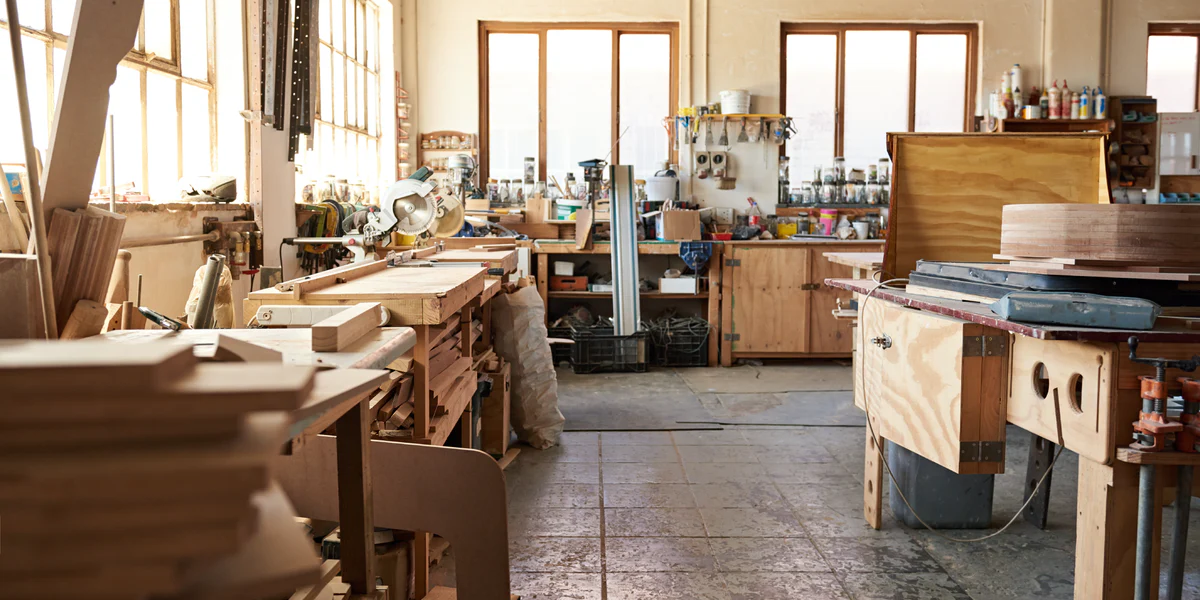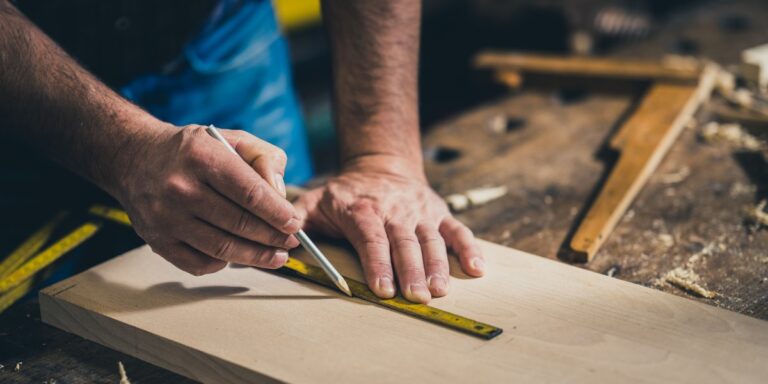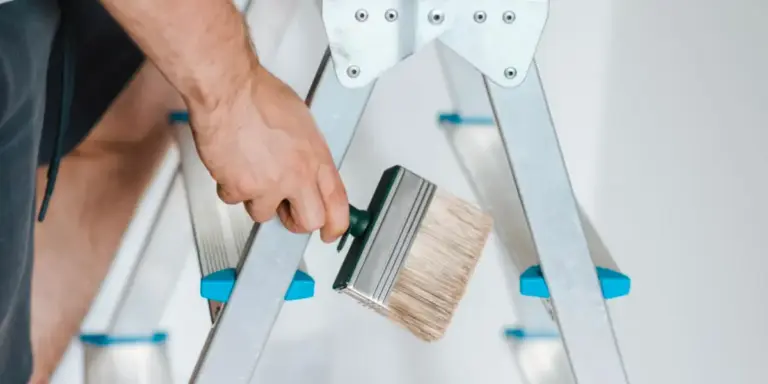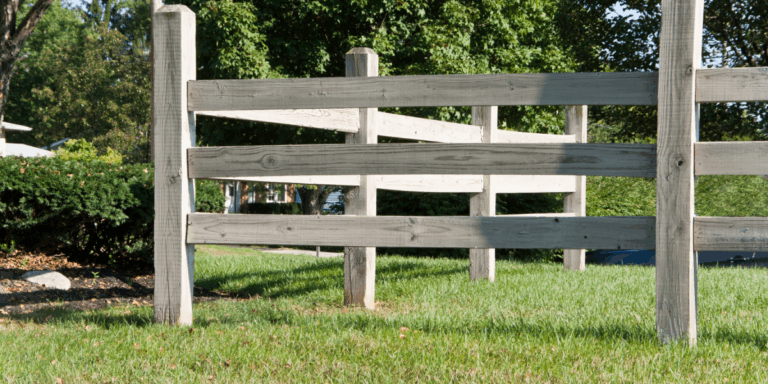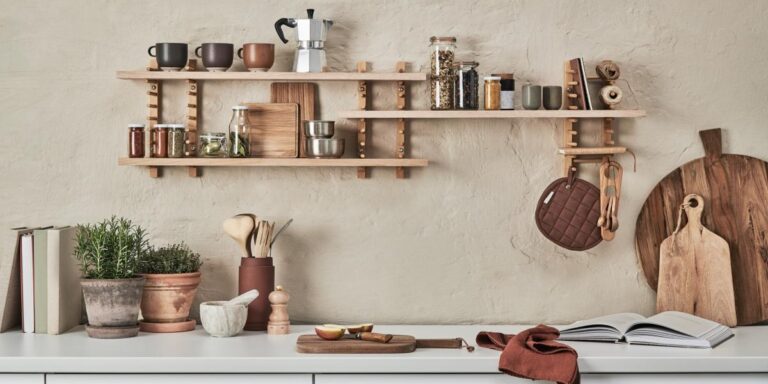How to Build a Simple Workbench
Every DIY space needs a solid, reliable surface to work on. For me, learning how to build a simple workbench changed everything about the way I approach projects. Whether I’m cutting wood, assembling parts, repairing furniture, or sorting hardware, having a dedicated workbench makes the job smoother, safer, and far more efficient. Building a workbench doesn’t have to be complicated or expensive—it just needs to be strong, practical, and suited to your space.
If you’ve been stacking materials on the floor or using an old dining table as a makeshift work area, now is the perfect time to upgrade. This guide will walk you through the process of building a simple, sturdy, and versatile workbench using common tools and materials. You don’t need advanced carpentry skills—just a plan, some time, and a willingness to get hands-on.
Planning the Design
Before I began building, I had to decide what I needed the workbench to do. I measured the area in my garage and settled on dimensions that fit the space without crowding it. My workbench would be 60 inches wide, 30 inches deep, and 36 inches high. That height works well for me while standing, and I can still sit on a stool comfortably if needed.
I also thought about storage. I wanted a bottom shelf for bins and boxes, but I didn’t need drawers or cabinets—just open space. Simplicity was key. The whole point of learning how to build a simple workbench is to avoid unnecessary complexity while still creating something that gets the job done.
Materials and Tools
Here’s what I used to build my workbench:
Materials:
- 2 pieces of 3/4” plywood (4×8 feet) – for the top and bottom shelf
- 5 pieces of 2×4 lumber (8 feet long) – for the frame and legs
- 2.5” wood screws
- Wood glue
- Sandpaper (medium and fine grit)
- Wood filler (optional)
Tools:
- Circular saw or hand saw
- Cordless drill with screwdriver bits
- Measuring tape
- Speed square
- Clamps
- Pencil
- Level
- Sander (optional)
Having everything laid out ahead of time helped keep the process smooth. Once I gathered the tools and materials, it was time to begin the build.
Cutting the Lumber
The first step was measuring and cutting all my 2x4s. I needed:
- 4 legs at 36 inches each
- 4 side rails at 60 inches (2 for the top frame, 2 for the lower shelf frame)
- 4 end rails at 27 inches (2 for the top frame, 2 for the lower shelf frame)
- 3 support braces (one center brace for the top frame, one for the shelf, and one back rail if needed)
Using a circular saw, I made straight, clean cuts and double-checked my measurements. Accuracy at this stage is essential. If one leg ends up shorter than the others, the entire bench becomes unstable.
Assembling the Frame
I began with the top frame. I laid out two 60-inch side rails and attached the 27-inch end rails between them, forming a rectangle. I drilled pilot holes to prevent the wood from splitting and fastened the corners with 2.5” screws and a bit of wood glue.
To keep the frame from wobbling or sagging in the middle, I added a center brace—a 27-inch piece placed halfway between the end rails. I secured it with more screws, making sure everything was square using my speed square.
Then I repeated the process for the lower shelf frame, which would sit about 8 inches off the ground.
Adding the Legs
This part required some precision. I stood the top frame upright and clamped each leg to the inside of the corners, one at a time. I secured each leg with two screws through the side rail and two through the end rail. Again, I used wood glue at each joint for extra strength.
Once all four legs were attached to the top frame, I flipped the structure upright. It already started to look like a workbench, and that was a satisfying moment.
I then measured 8 inches from the bottom of each leg and marked where the lower shelf frame would attach. After clamping it into place, I drilled and screwed it into the legs. This added a lot of stability to the entire structure.
Attaching the Work Surface
The 3/4” plywood served as the work surface. I cut it to 60 x 30 inches to match the top frame, allowing for a slight overhang. That overhang is useful for clamping things or cleaning up the edge without catching on the frame.
I applied wood glue to the top of the frame and placed the plywood on top, aligning it carefully. Using clamps to hold it steady, I drove 2” screws into the plywood every 8 to 10 inches around the perimeter and across the center brace. That ensured a tight, secure fit.
If you’re learning how to build a simple workbench, take your time on this part. A solid, flat surface is what you’ll rely on for every future project.
Installing the Lower Shelf
I used the second sheet of plywood to create the bottom shelf. After trimming it to size, I dropped it into place on the lower frame. I didn’t bother gluing it down—just secured it with a few screws to keep it from shifting.
The shelf became a great place to store bins of fasteners, toolboxes, and other supplies that don’t need to be on the work surface.
Sanding and Finishing
To avoid splinters and rough edges, I went over the entire structure with medium and fine-grit sandpaper. I focused on the corners, edges, and any rough patches. If there were visible screw holes or gaps, I filled them with wood filler.
I didn’t apply a fancy finish—just a coat of wood sealant to protect against spills and sawdust buildup. If you prefer, you can paint the bench, stain it, or even add a rubber mat on top for a non-slip surface.
For those focusing on how to build a simple workbench, remember that a clean finish isn’t about aesthetics alone—it’s also about comfort and usability.
Optional Add-Ons
Once the bench was complete, I added a few extras over time:
- A power strip mounted to the side for easy tool access
- A pegboard along the back wall for hanging tools
- A vise bolted to one corner of the top
- Casters with locks for mobility (if you need to move the bench)
None of these additions are required, but they increase the functionality of the workbench and make it even more useful for ongoing projects.
Tips to Keep in Mind
Here are a few lessons I picked up while figuring out how to build a simple workbench:
- Measure twice, cut once – A small mistake can lead to uneven frames or wobbly legs.
- Use pilot holes – They prevent wood from splitting, especially near edges.
- Glue plus screws – This combination creates a much stronger joint.
- Keep it level – Use a level at every stage to ensure your bench is stable.
- Don’t overbuild – A workbench doesn’t need to be pretty. It needs to be practical and sturdy.
Cost Breakdown
One of the best parts about this project was the low cost. Here’s a rough breakdown:
- 2×4 lumber (5 boards): $25–30
- Plywood (2 sheets): $60–80
- Screws and glue: $10–15
- Total: Around $100–125
Considering the price of store-bought workbenches, building one yourself can save a significant amount of money, and the result is often more durable and better suited to your needs.
Final Thoughts
Learning how to build a simple workbench gave me more than just a flat surface—it gave me a central hub for every DIY idea that followed. From woodworking to home repairs, having a dedicated workspace keeps me organized, motivated, and ready to take on new projects.
It’s not just about tools and wood; it’s about creating a reliable foundation that supports your skills as they grow. The process is straightforward, and it’s a perfect weekend project. Once you’ve built your own workbench, you’ll wonder how you ever managed without it.
So, if you’re ready to improve your DIY experience, don’t wait. Grab some basic materials, set aside a weekend, and take the first step in learning how to build a simple workbench that works as hard as you do.

